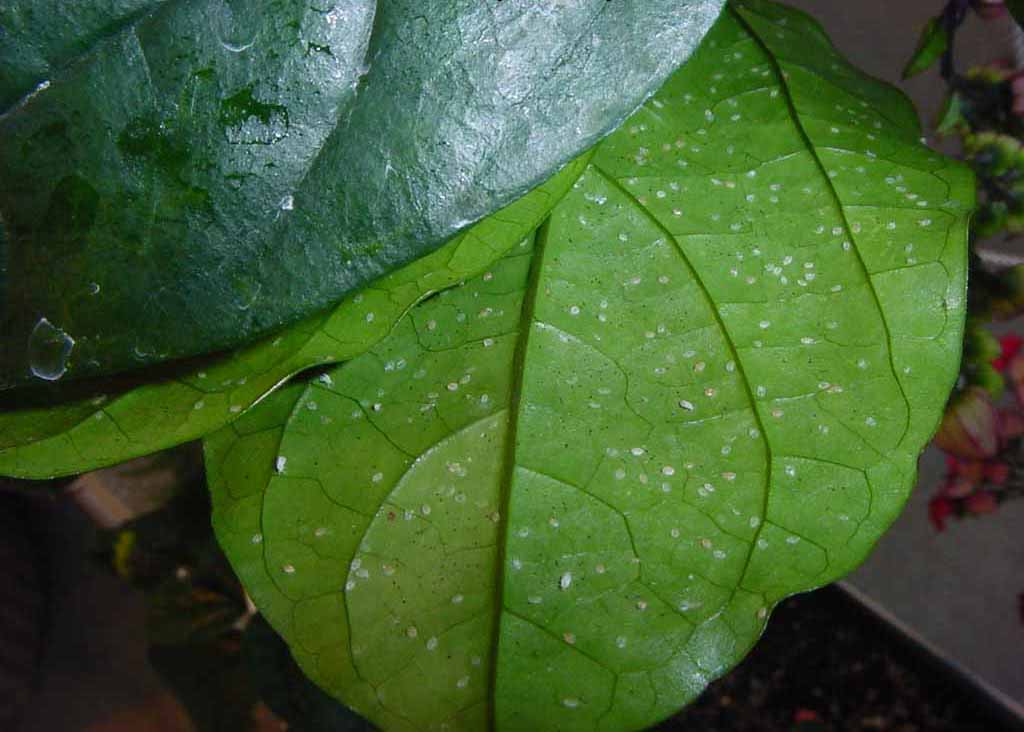Whiteflies, which have besieged the Iranian capital Tehran every summer for the past two years, may not get a chance to do so this time around.
According to Shahab Manzari, an entomologist at the Iranian Research Institute of Plant Protection (a subsidiary of the Agriculture Ministry), a workgroup tasked with addressing Tehran’s pest problem is considering introducing a genus of tiny wasps called trichogramma, “the whiteflies’ natural predator”, in the Iranian capital.
Trichogramma are among the most extensively studied of egg parasitoids widely used as a means of biological pest control.
“Using a natural predator to combat pests is possibly the safest and most effective way of dealing with the problem as it overrides the need for pesticides and other chemical agents that may be harmful to people,” Manzari told IRNA. “We’ll have to bring the wasps from Shiraz.”
Whiteflies are sap feeders that reduce the overall vigor of plants with their feeding. As whitefly infestations become severe, they cause plants to yellow and lose their leaves prematurely.
While they are harmless to humans, they are extremely irritating as they usually find their way into people’s mouths, nostrils and even eyes.
They also produce large amounts of sticky, sugary honeydew, which in turn is colonized by black sooty mold, reducing the attractiveness and marketability of whitefly-infested crops.
Even worse, whiteflies are vectors that transmit over a hundred different plant viruses.
Tehran Municipality has resorted to using yellow sticky cards to control their populations, to no avail.
“There is no way to say for certain that a method will work, but we expect a significant drop in the population of whiteflies this summer,” Manzari added.
Harmless to Humans
The plan might raise concerns among some regarding its viability and whether the wasps pose risks to humans. The answer is, apparently, a firm no.
“Using parasitoids is a very common practice in agriculture to tackle pest problems; it is safe, cheap and effective,” said Shahram Farokhi, a researcher at IRIPP.
He said the research institute’s policy is to devise plans that require a minimal use of pesticides to reduce harm to humans, and using trichogramma instead of chemicals is necessary to deal with whiteflies.
“These wasps are very small and specialize in pest control. They are about as harmful as ladybugs to humans (which is to say, they pose no threat to people),” Farokhi said.
The presence of whiteflies in Tehran has sparked a war of words between the relevant bodies whose responsibility it is to combat the swarm of whiteflies, with the Department of Environment and Plant Protection Organization accusing the municipality of not doing its job and the TM claiming that dealing with the pest problem is not its responsibility.
“We’re willing to cooperate with other relevant organizations, but combating the swarm of whiteflies is not our responsibility,” Mojtaba Abdollahi, a deputy at the TM, said in April.
This echoed the sentiments of Tehran Mayor Mohammad Baqer Qalibaf who had said last year: “The municipality helps ministries and departments with their responsibilities, but it is not our duty to do their job for them.”
In response, Mohammad Hadi Heydarzadeh, head of Tehran’s DOE office, cited Article 20 of municipality rules and said, “Combating and controlling pollution of any kind, including a swarm of whiteflies, is indeed the responsibility of the municipality.”
While the precise source of the pest problem is still unknown, some have attributed the rise in their numbers to global warming, while others have suggested that the bugs may have piggybacked to Tehran on imported plants or fruit.


